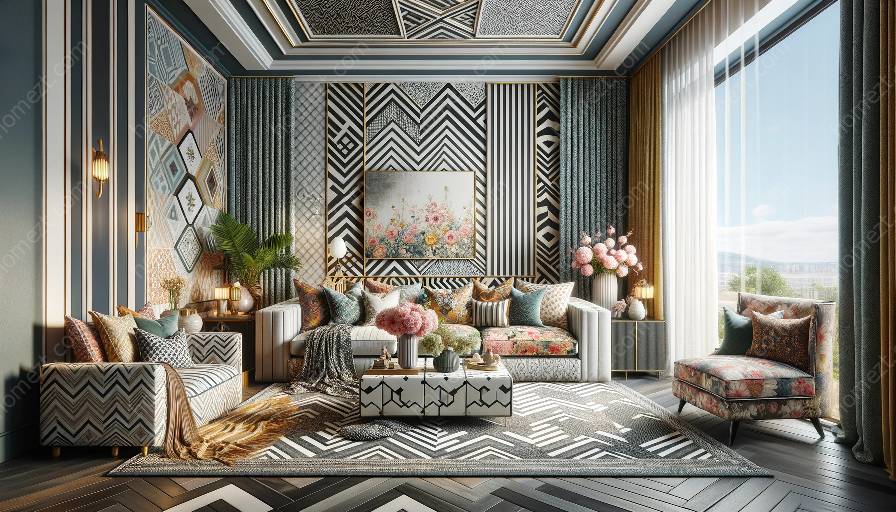Minimalist interior decor is characterized by clean lines, simplicity, and a focus on functionality. However, this doesn't mean that patterns have no place in a minimalist space. In fact, the art of pattern mixing can add visual interest, warmth, and a touch of personality to a minimalist interior. By understanding how to incorporate patterns in a thoughtful and intentional way, you can create a space that is both minimalist and inviting.
The Beauty of Minimalist Interior Decor
Minimalist interior decor is a design style that emphasizes simplicity, functionality, and the use of clean lines. It often features a monochromatic color palette, open spaces, and minimal clutter. The goal of minimalist design is to create a serene and uncluttered environment that promotes a sense of calm and tranquility.
One of the key principles of minimalist interior decor is the idea that less is more. This means that every element in a minimalist space is carefully chosen and serves a specific purpose. There is a focus on quality over quantity, and an emphasis on creating a sense of openness and flow.
Patterns in Minimalist Interior Decor
While minimalist interior decor may initially seem at odds with the concept of patterns, there are ways to incorporate patterns in a minimalist space without overwhelming the design. The key is to focus on simplicity, balance, and restraint.
Patterns can be introduced in a variety of ways, including through textiles, wallpaper, artwork, and accessories. When incorporating patterns in a minimalist space, it's important to consider the scale, color, and placement of the patterns to ensure they complement the overall design.
Pattern Mixing: Achieving Harmony
Pattern mixing is the art of combining different patterns and textures in a way that creates a cohesive and visually appealing design. In minimalist interior decor, pattern mixing can be used to add depth and interest to the space, while still maintaining the clean and uncluttered aesthetic of minimalism.
When mixing patterns in a minimalist space, it's important to consider the scale and proportion of the patterns. Mixing large-scale patterns with smaller, more subtle patterns can create a dynamic and balanced look. Additionally, combining different types of patterns, such as stripes, geometric shapes, and organic motifs, can add variety and richness to the design.
Decorating with Patterns
When decorating with patterns in a minimalist interior, it's important to choose patterns that complement the overall design aesthetic. Using a limited color palette and sticking to simple, clean lines can help maintain the minimalist feel while still incorporating patterns.
Textiles, such as rugs, throw pillows, and curtains, are great options for introducing patterns into a minimalist space. By layering different textures and patterns, you can create a sense of depth and coziness without sacrificing the clean and uncluttered look of minimalism.
Artwork and accessories can also be used to incorporate patterns into a minimalist interior. Consider incorporating patterns through framed art prints, ceramic vases, or patterned throws to add visual interest and personality to the space.
Harmonizing Minimalism and Maximalism
While minimalist interior decor focuses on simplicity and restraint, maximalism embraces abundance, boldness, and eclecticism. The art of pattern mixing allows you to bridge the gap between minimalism and maximalism, creating a space that is both serene and visually stimulating.
By carefully selecting and combining patterns, you can achieve a harmonious balance between minimalism and maximalism. The key is to maintain a sense of cohesion and intentionality in the use of patterns, while allowing for a bit of eclecticism and personality to shine through.
Conclusion
Patterns can play a valuable role in minimalist interior decor when approached with care and intention. By understanding the principles of pattern mixing and how to harmonize patterns within a minimalist space, you can create a design that is both serene and visually engaging. Embracing the beauty of minimalism while incorporating the richness of patterns and textures allows for a space that is truly unique and inviting.






































